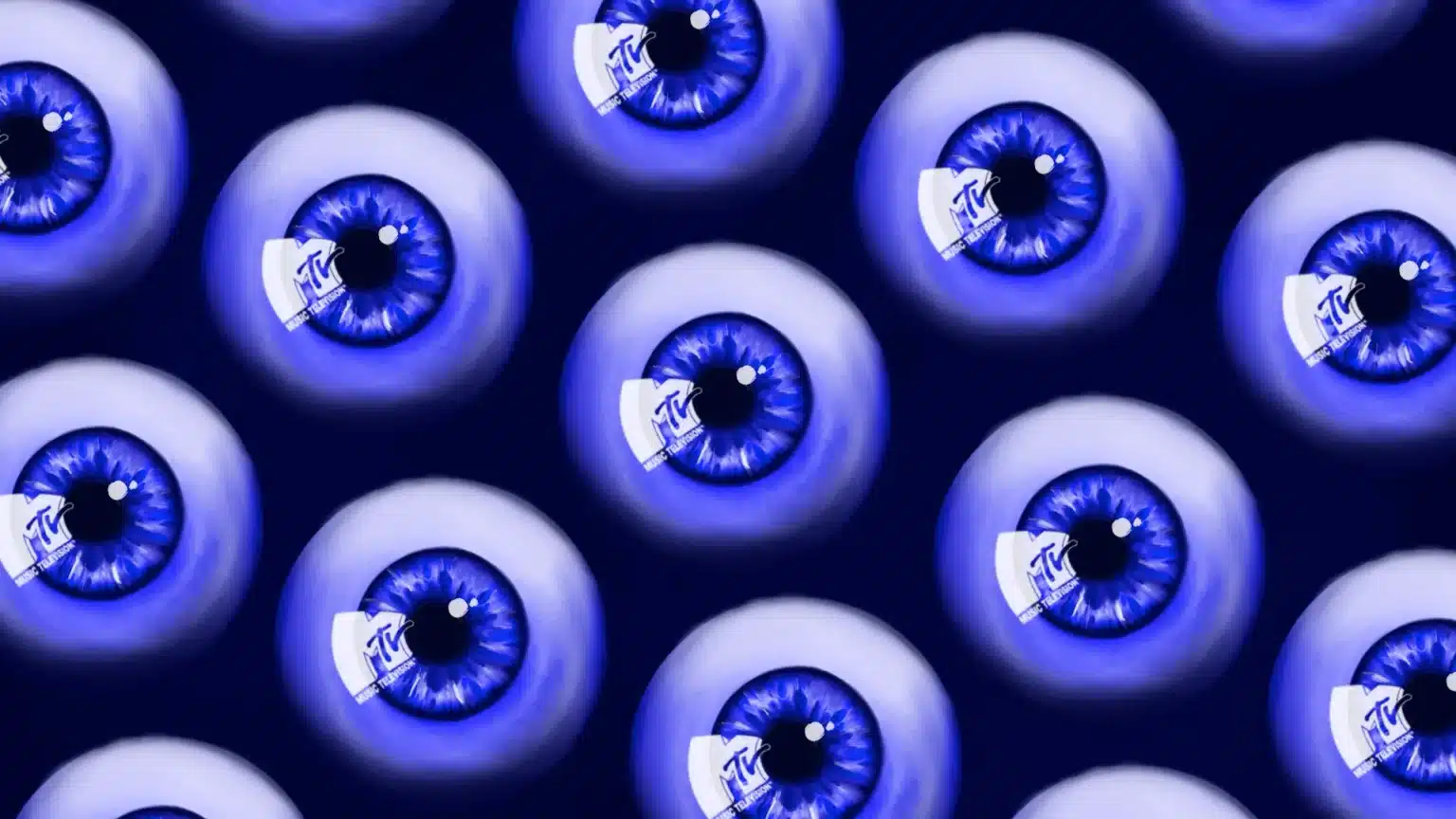Was the MTV logo the first variable logo? Probably not! But it was a daring mutant logo, one that captured the spirit of a grunge generation: disenchanted, rebellious, and raw.
With the MTV channel as we (millennials) have always known it now coming to an end, there is a certain sadness attached to that closure. My after-school afternoons were often spent with MTV playing in the background and, while doing my homework, I would watch the MTV logotype morph, melt, and explode as brought to life by designers, animators, and independent artists from around the world.
MTV in the 1990s embodied the spirit of an experimental, anti-establishment generation. Shows like Beavis and Butt-Head and Daria helped define the channel’s aesthetic and editorial tone. They combined handmade animation, absurd humor, social commentary, critique of consumer culture, and a raw, handcrafted visual sensibility that sharply contrasted with the polished advertising of the era.
MTV as creative laboratory
These productions turned MTV into a creative laboratory, a kind of space for audiovisual experimentation where graphic design, illustration, and music merged into something hybrid and innovative. While conventional communication followed corporate graphic standards and predictable visual systems, MTV embraced a fragmented, gritty, chaotic identity, conveying a form of creative, ironic disorder directly influenced by underground culture, street art, and independent animation.
The MTV logo idents were extraordinary: a collision of live action, collage, stop motion, and hand-drawn 2D animation, often built around wildly unexpected themes.
MTV anticipated the concept of a dynamic authentic brand and fluid identity, an idea that would only become widely adopted in the 2000s by examples such as Google Doodles, Nickelodeon, Casa da Música, or the City of Melbourne. The logo, traditionally a symbol of consistency and recognition, became a living, mutable, and unpredictable element.
This adaptability reflected MTV’s confidence in its role as a cultural agent and the voice of an underground generation. It functioned as a performative brand, positioned closer to art and pop culture than to conventional advertising.
The productions of the 1990s transformed MTV into a genuine creative laboratory. It was impossible not to love it, and, as a young viewer who dreamed of becoming a creative professional, impossible not to feel inspired by.
Transparency disclaimer
Article written by Sandra Lopes
Illustration cover by Brígida Guerreiro (aka anotherbrigida)
MTV Identity Archive video: https://www.youtube.com/watch?v=F4jaBb7X0V8
MTV logotype credits:
“One Small Step”, by Perpetual Motion Pictures
“M Rocks”, by Broadcast Arts
“Hairy M”, by Broadcast Arts
“Atomic Era”, by Colossal Pictures
“Happy New Year”, by Colossal Pictures
“Dancing Cats”, by Buzzco Associates (unaired)
“Sunday Special”, by Colossal Pictures
“Art History”, by Colossal Pictures
“24/7”, by Tom Pomposello
“M-Medium”, by Bob Kinkel/The Ink Tank
“Fly”, by Anthony Gonzalez
“Trojan M”, by Bill Jarcho/Olive Jar Animation
“Adam and Eve”, by Broadcast Arts
“Guillotine”, by Ron Labbe/Olive Jar Animation
“Masks ’87”, by Henry Selick
“Ouija”, by Olive Jar Animation
“Lupo the Butcher (1)”, by Danny Antonucci
“Meat Jelly”, by Limelight
“Far Out Man (1)”, by Ged Haney/Pearly Oyster Productions
“M Also Stands For”, by Run Wrake





